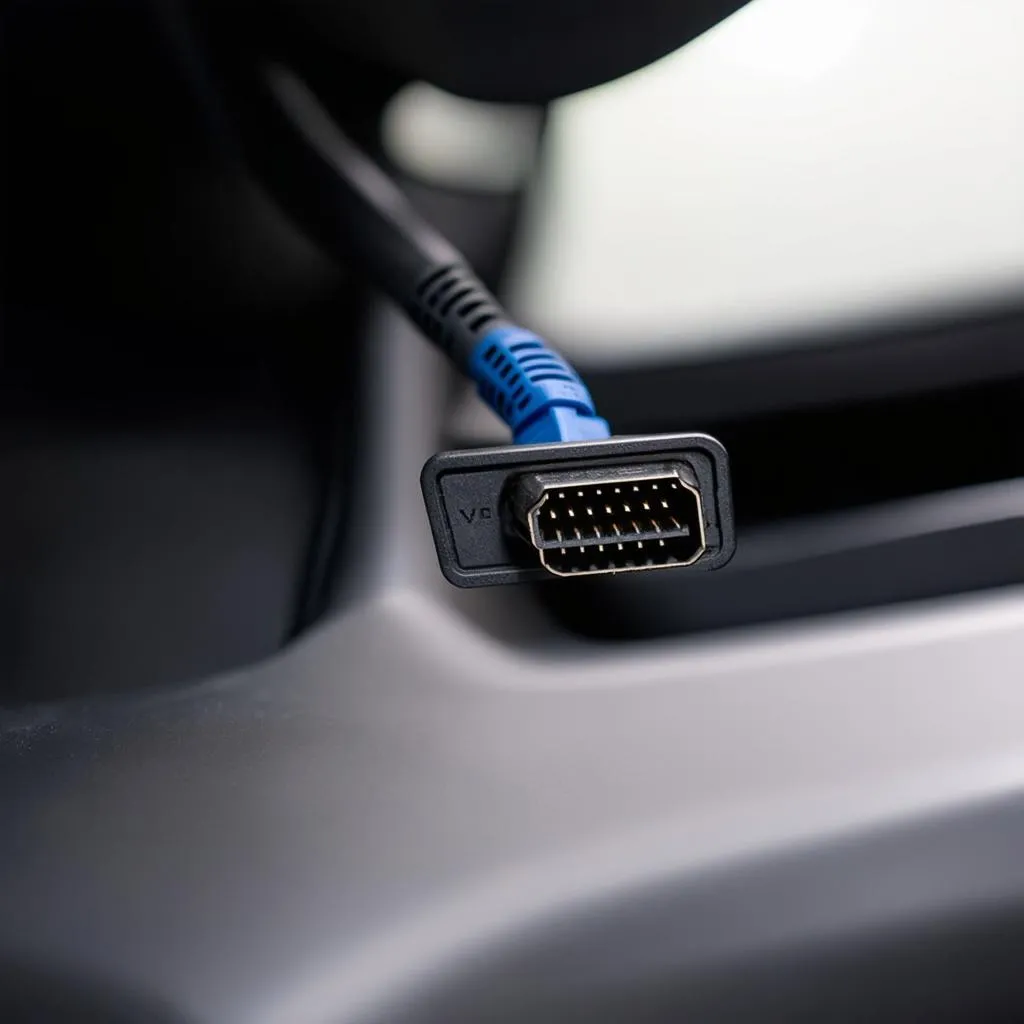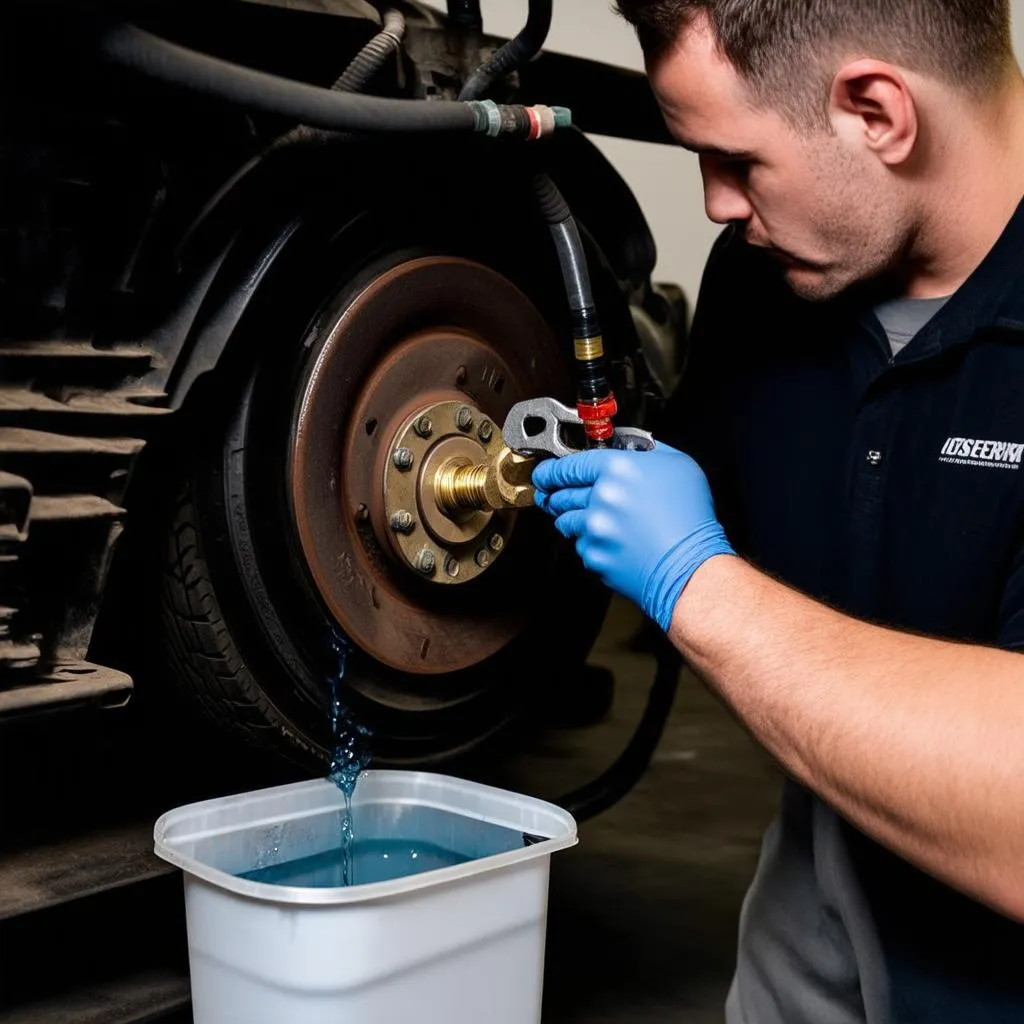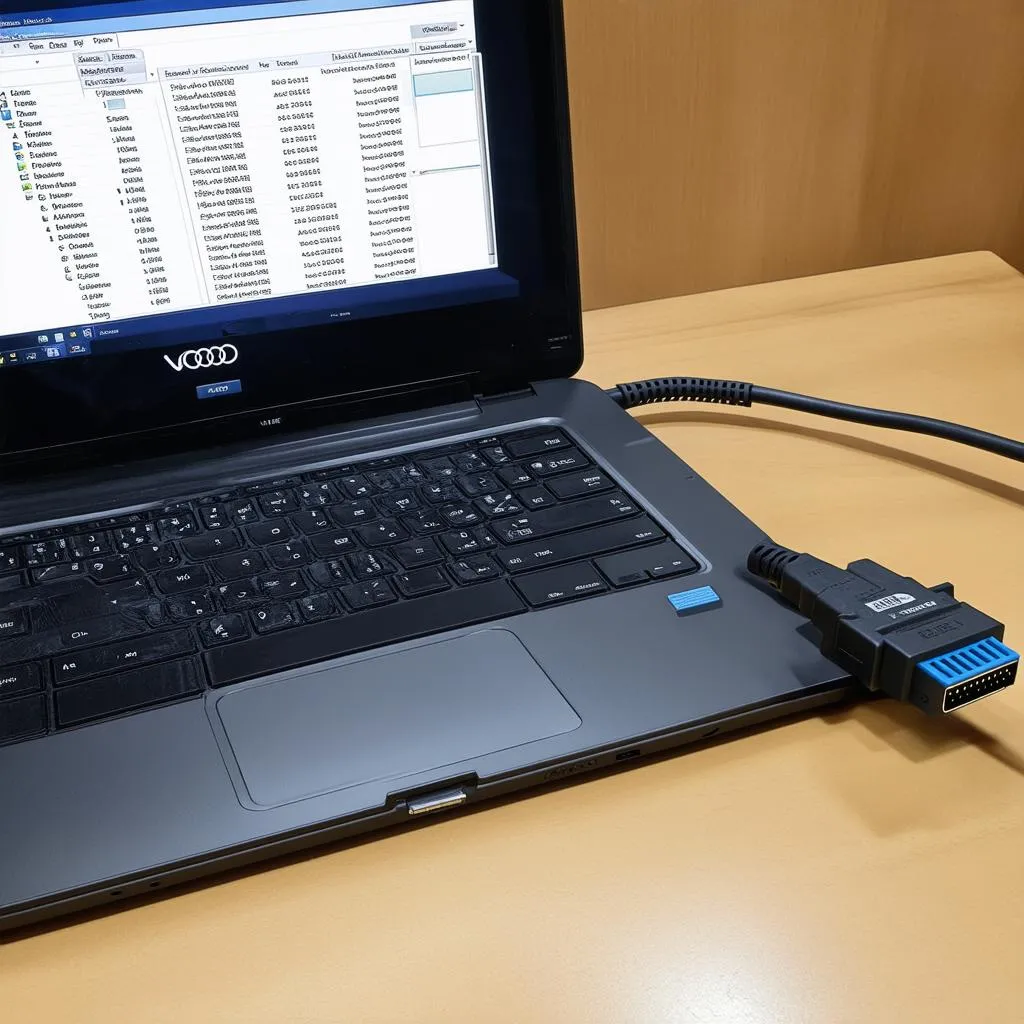Performing an ABS bleed procedure is an essential maintenance task for your vehicle’s braking system. If you’re a proud owner of a Volkswagen, Audi, or any vehicle from the VAG group, a VCDS scan tool can be your best friend in this process. This article provides a detailed guide on how to perform an ABS bleed procedure using a VCDS scan tool, empowering you to maintain optimal braking performance.
Understanding the VCDS Scan Tool and ABS Bleeding
Before diving into the procedure, it’s crucial to understand the tools and the process involved.
What is a VCDS Scan Tool?
VCDS, previously known as VAG-COM, is a powerful diagnostic software and hardware combination designed for vehicles within the Volkswagen Audi Group (VAG). This includes brands like Volkswagen, Audi, Seat, Skoda, Bentley, Lamborghini, and more. This sophisticated tool allows you to access and interact with your vehicle’s various electronic control units (ECUs), including the ABS module.
“Using a VCDS scan tool gives you unprecedented control over your vehicle’s systems, allowing for precise diagnostics and maintenance,” says John Miller, a seasoned automotive engineer specializing in vehicle diagnostics. “It’s an indispensable tool for any DIY enthusiast or professional mechanic working with VAG vehicles.”
What is ABS Bleeding and Why is it Important?
ABS, or Anti-lock Braking System, is a crucial safety feature in modern vehicles. It prevents wheel lockup during hard braking, ensuring steering control and reducing stopping distances. Over time, air bubbles can accumulate in the ABS control module and brake lines, compromising braking performance.
An ABS bleed procedure involves flushing out these air bubbles, restoring optimal hydraulic pressure, and ensuring your ABS system functions effectively. This procedure is often necessary after opening the brake system for maintenance, such as replacing brake lines, calipers, or the ABS module itself.
VCDS Scan Tool ABS Bleed Procedure: Step-by-Step Guide
Here’s a comprehensive step-by-step guide on how to perform an ABS bleed procedure using a VCDS scan tool:
1. Preparation:
- Gather your equipment: You’ll need your VCDS scan tool, a container for the brake fluid, a wrench that fits your bleeder valves, and a clear hose that fits snugly over the bleeder valve.
- Safety First: Always wear safety glasses and gloves when working with brake fluid. Park your vehicle on a level surface, engage the parking brake, and chock the wheels to prevent rolling.
- Consult your Vehicle’s Manual: Always refer to your vehicle’s specific repair manual for detailed instructions and safety precautions.
2. Connecting the VCDS Scan Tool:
- Connect your VCDS interface to your vehicle’s OBDII port, typically located under the dashboard on the driver’s side.
- Turn on the ignition but do not start the engine.
3. Accessing the ABS Module:
- Launch the VCDS software on your computer.
- Select the “Select Control Module” option.
- Choose “03 – ABS Brakes” from the list of available modules.
4. Initiating the ABS Bleed Procedure:
- Once inside the ABS module, navigate to the “Basic Settings” function.
- Locate and select the option for “ABS Bleeding” or “Brake Bleeding.” The exact wording may vary slightly depending on your vehicle model and VCDS software version.
- Follow the on-screen instructions carefully. The VCDS software will guide you through the process, instructing you when to open and close specific bleeder valves while the system automatically cycles the ABS pump to purge air.
5. Bleeding the Brake Lines:
- Starting with the wheel farthest from the master cylinder, connect the clear hose to the bleeder valve and submerge the other end in the container with brake fluid.
- Ask an assistant to press and hold the brake pedal.
- Open the bleeder valve to allow the fluid and air to escape.
- Close the valve once the fluid runs clear and free of bubbles.
- Repeat this process for each wheel, following the specific order outlined in your vehicle’s repair manual.
6. Completing the Procedure:
- Once you’ve bled all four wheels, return to the VCDS software and follow the prompts to finalize the procedure.
- The software may instruct you to cycle the ABS pump a few more times to ensure all air is purged.
- Top off the brake fluid reservoir to the correct level using fresh brake fluid that meets your vehicle manufacturer’s specifications.
 VCDS Scan Tool Connection
VCDS Scan Tool Connection
Essential Tips and Precautions
- Bleed Sequence is Crucial: Always bleed the brake lines in the correct sequence specified for your vehicle model. This ensures that air is pushed out of the system efficiently.
- Top Up the Reservoir: Never let the brake fluid reservoir run dry during the bleeding process. Always keep it topped up to prevent air from entering the system.
- Check for Leaks: After completing the procedure, visually inspect all connections and components for any signs of leaks.
- Test the Brakes: Before driving, test the brakes in a safe, controlled environment to ensure they feel firm and responsive.
Common Questions About VCDS ABS Bleed Procedure:
Can I perform an ABS bleed without a VCDS scan tool?
While it’s technically possible to bleed brakes without a scan tool on some vehicles, it’s highly recommended to use a VCDS for VAG vehicles. The VCDS tool activates the ABS pump in a specific sequence during the bleed, ensuring a complete and effective air purge.
What are the signs that my car needs an ABS bleed?
- A soft or spongy brake pedal feel
- Increased stopping distance
- ABS warning light illuminated on the dashboard
- Brake pedal pulsating unusually during braking
How often should I bleed my ABS system?
It’s generally recommended to bleed your ABS system every 2-3 years or 30,000-60,000 miles as a preventative maintenance measure. However, always consult your vehicle’s owner’s manual for specific recommendations.
 Brake Bleeding Procedure
Brake Bleeding Procedure
Cardiagtech: Your Partner in Automotive Diagnostics
If you’re looking to enhance your automotive diagnostic capabilities, consider the wide range of high-quality diagnostic tools available at Cardiagtech. From VCDS scan tools to other professional-grade equipment, Cardiagtech offers solutions to empower DIY enthusiasts and professional mechanics alike. Visit Cardiagtech today to explore their comprehensive selection and elevate your automotive maintenance experience.
Conclusion
Performing a VCDS scan tool ABS bleed procedure is an essential aspect of maintaining a safe and reliable braking system for your VAG vehicle. By following the steps outlined in this guide, you can ensure optimal ABS performance and enjoy peace of mind on the road. Remember to always consult your vehicle’s repair manual for model-specific instructions and safety precautions.


